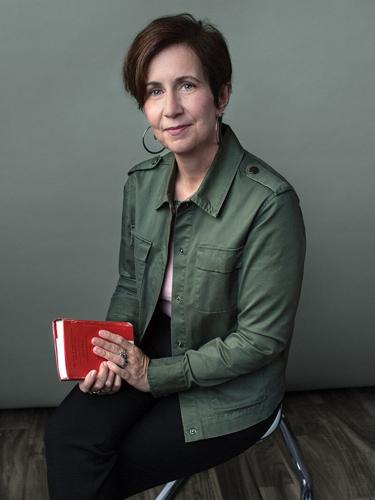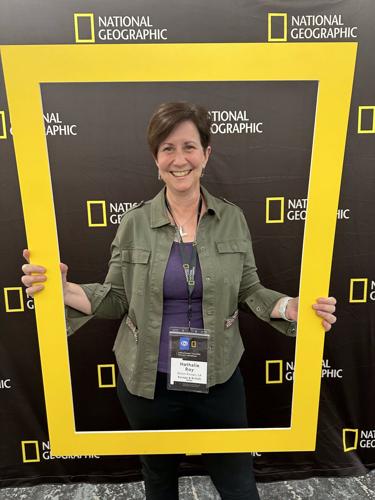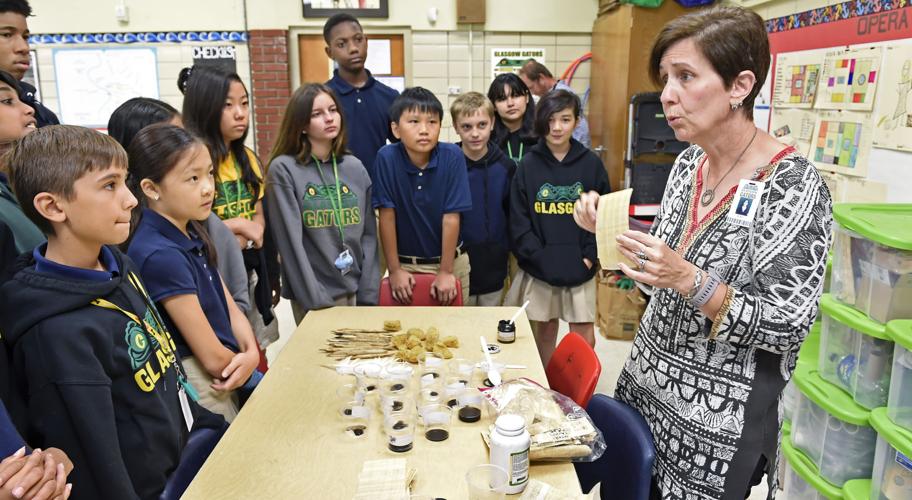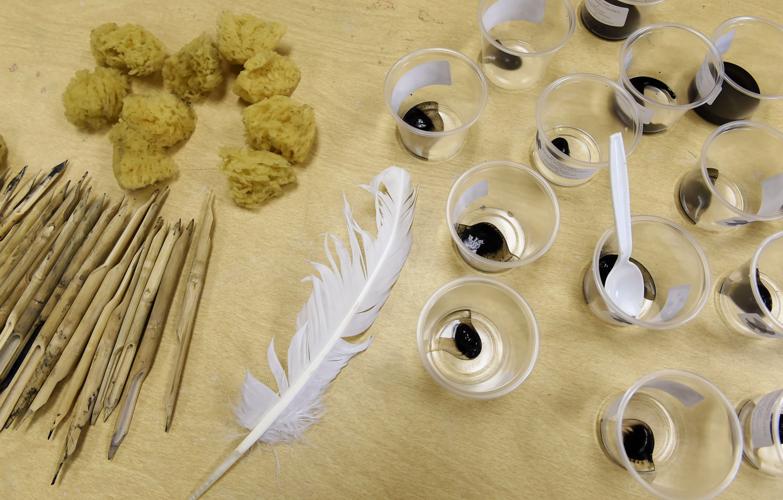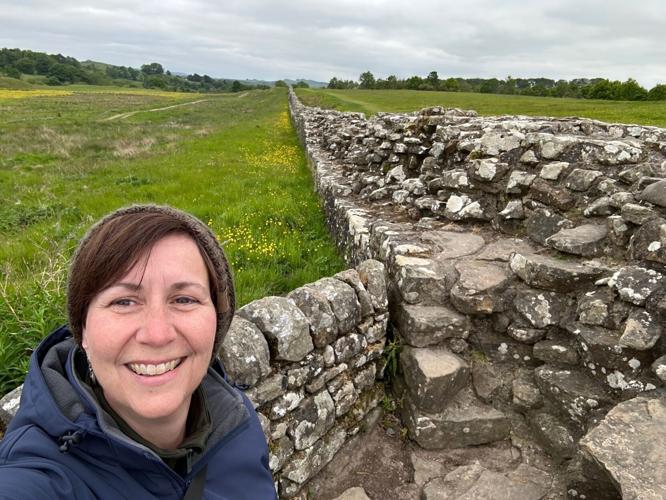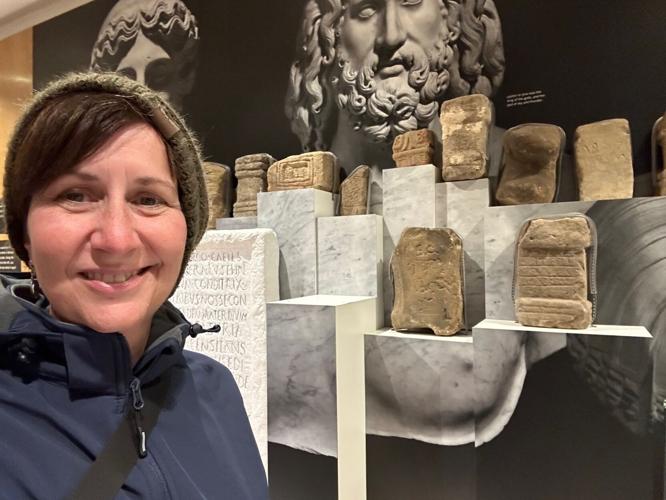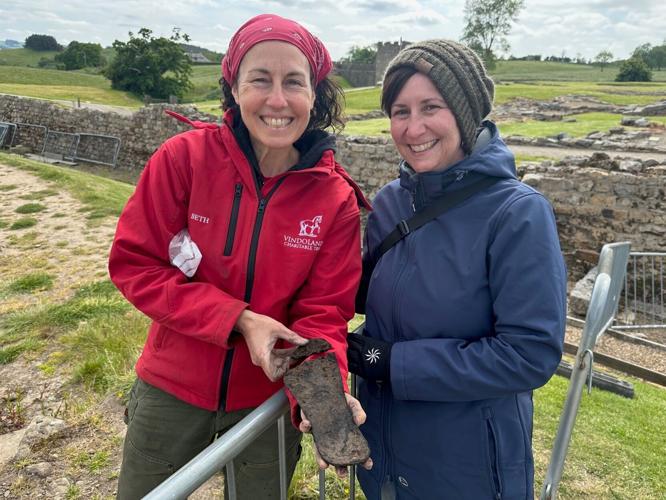After school lets out for the summer, Nathalie Roy likes to travel. A classics teacher versed in Latin and Greek, Roy uses her summer trips to go back in time and learn more about ancient peoples.
This summer, National Geographic is picking up the tab.
Roy is one of 35 educators across the country to win the prized Grosvenor Teacher Fellowship, which aims to enhance teachers' geographic knowledge via personal experiences to bring new ideas and curriculum back to their classrooms.

Nathalie Roy, a classics teacher at Glasgow Middle School in Baton Rouge, at a training session in April 2024 in Washington, D.C. Roy was there after winning National Geographic's Grosvenor Teaching Fellowship, which is funding an educational cruise this summer that will allow her to see ancient sites in the British Isles.
Most fellows opt for Antarctica, the Galápagos, Patagonia, Alaska or the Arctic. Roy chose to take a cruise around the British Isles.
She plans to board the National Geographic Explorer cruise ship on June 9 in Edinburgh, Scotland, and sail for 11 days, visiting coastal sites in Scotland, Ireland and England before disembarking in Portsmouth, England.
Along with her shipmate and Grosvenor fellow, Debra Freitag, a middle school social studies teacher from Wisconsin, Roy plans to arrive a few days early and leave a few days late. Their itinerary includes seeing Antonine Wall, a short-lived, turf-based Roman wall built north of Hadrian’s Wall. They also plan to visit Loch Ness and the Scottish Highlands.
“It’s a great privilege I have to be able to travel," Roy said, "but I love just as much the part where I come back and have students to share it with so that they can learn from me and can be inspired to go and do it themselves."

Nathalie Roy.
Roy is no stranger to professional and public recognition. A former Louisiana teacher of the year, she created a Roman Technology class in which her students at Glasgow Middle have built catapults, created ink from scratch and constructed a sundial and brick kiln. She made the news last year when her students built a Roman Road through the campus of the Baton Rouge school.

Tyson Rupnow, LaDOTD Expert and Guide, speaks with Nathalie Roy, Roman Technology teacher, next to at the Roman Road Project ribbon cutting ceremony held at Glasgow Middle School on March 30, 2023 in Baton Rouge, La.
Last summer, Roy spent two weeks traveling across England, aided by a scholarship from The National Latin Exam. On that trip, she visited a range of ancient sites dating back to the days when the Romans controlled much of the island and dubbed it Provincia Britannia. She ventured as far north as Hadrian’s Wall, a stone wall built in the second century to separate Britannia from Scotland, known in Latin as Caledonia.

The raw materials, bamboo stylus, sponges for erasing and squid ink, for writing like the Romans wrote as teacher Nathalie Roy's Glasgow Middle School students learn about writing with smelly squid ink and papyrus Friday August 23, 2019, in Baton Rouge, La. Nathalie Roy, a Latin teacher at Glasgow Middle School in Baton Rouge, is teaching an elective class for middle school students interested in the ancient Roman world and the technology of Roman daily life, with no Latin language experience needed. It shows that STEM is not just a modern thing but goes way back. Roy does daily interactive projects: spinning and hair styling; mixing and setting concrete; record keeping with wax tablets, papyrus, and abaci; hydraulic devices, such as aqueducts and water screws; weapons like catapults; etc. Roy last year published a paper on her class in The Classical Outlook, Òthe leading publication for classroom teachers of Latin, Greek, and Classical Humanities in the schools.Ó
In many ways, this summer’s trip will pick up where last summer’s trip left off.
Since 2006, The National Geographic Society has underwritten a series of educational cruises, taking 400 educators to far-flung destinations. The fellowship is a gift of Lindblad Expeditions, a cruise line that is a pioneer in ecotourism, and named after longtime National Geographic President Gil Grosvenor.
Roy describes the experience as a chance to see remote places she otherwise would not see.
“I’ve always wanted to go to the Orkney (Islands), but would I plan a trip around it? Probably not,” she said.
Glasgow Middle Principal Erin Howard has given Roy marching orders to bring something back representative of the City of Glasgow, which the Baton Rouge school is named after. Her students also have given her a task.
“I’ve already been told I have to bring back a puffin,” she said, referring to the cute, seagoing bird that looks like a penguin.
The cruise plans to visit several World Heritage sites. That includes Staffa Island, a Scottish Isle that features the ancient Fingal's Cave which is formed entirely from hexagonal basalt columns and is home to a puffin colony.
To get from the cruise ship to shore, tour members will board smaller, Zodiac inflatable boats.
Roy acknowledged she has never taken a cruise before or ridden a Zodiac boat. She said she’s trying to prepare for the unknown. During a five-day training session held last month in Washington, D.C. she said was able to pose questions to a naturalist who will join her and Freitag on the cruise.
“He said, ‘There are two types of people on these trips: those who have been seasick and those who will be seasick,’” Roy recalled.
After disembarking in Portsmouth, Roy and Freitag plan to head north to London to visit the famed British Museum. Last summer she visited the museum, which has an extensive Roman collection, but the museum closed early so Roy couldn't see all she planned for. The museum is currently hosting an exhibition on what life was like for those who served in the Roman army.
After returning to the states in late June, Roy will have little time to relax. In July, she flies up to Monmouth College in western Illinois as part of a $175,000 grant from the National Endowment for the Humanities. There, she and Monmouth classics professor Bob Simmons will lead a summer institute to train teachers on what life was like back in the days of Ancient Olympics in Greece — the institute wraps up a week before the Summer Olympics start in Paris.
The Grosvenor Teacher Fellowship is a two-year commitment for Roy, and her work will resume when the new school year starts in early August. As she has in the past, she plans to share pictures and stories from her travels, which she said are a surefire hit with the kids. Then, she will reduce her trip into a five-photograph story, which she says will be hard for someone who loves to dump loads of un-curated photos onto social media.
After, she'll host an outreach event to showcase publicly what she learned and how she’s shared it with her students.
In year two, she will conduct an impact project with her students "to help them really develop that explorer mindset.” National Geographic lists three characteristics for such a mindset: curiosity, empathy and empowerment. To cultivate such an outlook, Roy plans to take the students on a trip of their own. She’s debating where to go. One possibility is to go to Poverty Point, the only World Heritage Site in Louisiana.
“There’s so many possible connections,” she said. “We could go in many different directions.”
But she’s said National Geographic trainers have urged her not to preplan too much, to let her own travel experiences inform her thinking.
“You have no idea what you’re going to learn and what’s going to inspire you,” she said.

